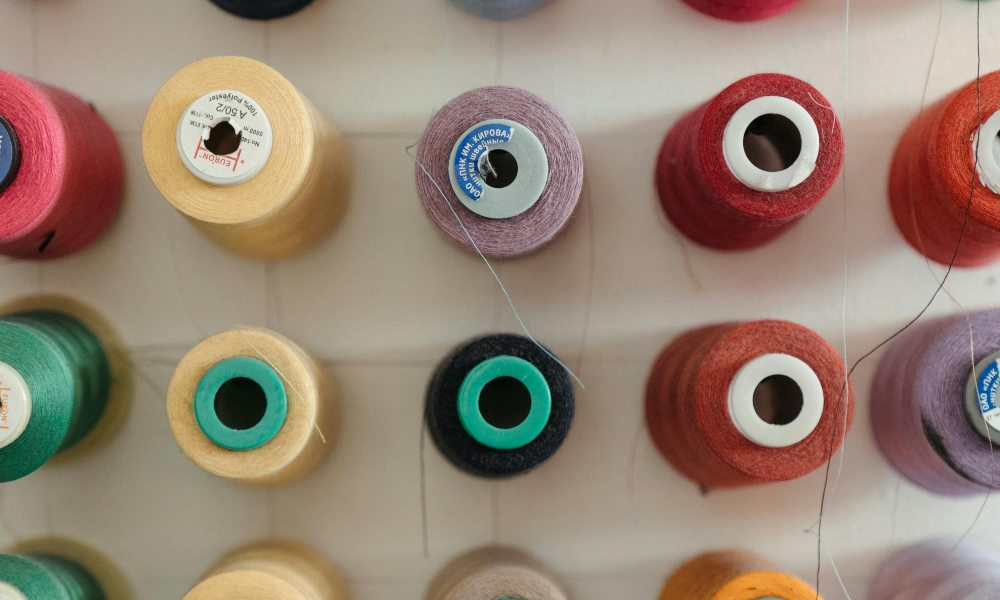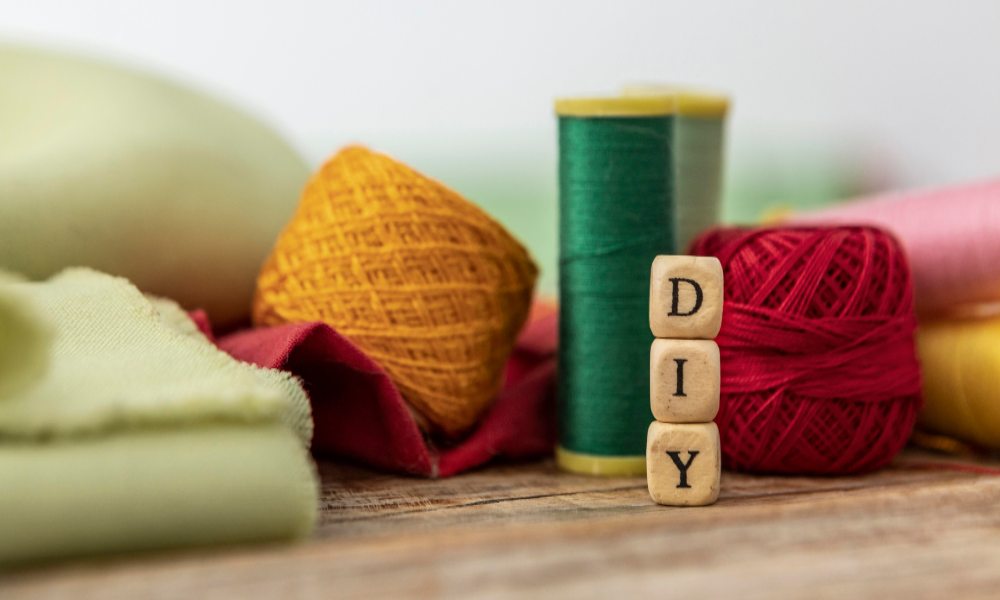Opening Sentence: Sewing with the right thread is key for any project to turn out great.
Key Points:
- Choosing the correct thread type
- Understanding thread weights
- Matching thread to fabric
- Proper threading techniques
- Avoiding common thread mistakes
Closing Question: Ready to learn some simple tips that will take your sewing game to the next level?
Types of Thread

Header: There are many different kinds of thread used for sewing. Knowing which ones to use is important.
All-purpose thread is a good choice for most basic sewing projects. This strong polyester thread comes in a variety of colours to match fabrics. It works well with woven materials like cotton or linen.
For delicate fabrics like silk or lightweight knits, use a finer thread like cotton-wrapped polyester. The thinner fibres help prevent leaving holes or damaging the fabric.
Heavier-weight threads like upholstery or button threads have a glazed finish. These are ideal for heavier materials that get a lot of wear and tear. The glaze helps the thread resist abrasion.
Thread Weight
Header: Thread weight refers to how thick or thin the thread fibres are.
In general, lightweight threads work best with lightweight fabrics. Heavier threads can cause puckering or leave holes in delicate textiles like chiffon or organza.
For bulkier or thicker materials, you need a sturdy, heavyweight thread that can withstand lots of friction and tension when sewing. Things like denim, canvas, and vinyl require a thicker thread.
As a rule of thumb, match your thread weight to the weight and thickness of the fabric you’re using. This helps ensure smooth, quality stitching.
Threading Techniques
Proper threading is just as important as choosing the right thread type and weight. Here are some easy tips:
- Always use a new needle for each project to avoid damaging the thread
- Make sure the thread goes through all guides and tensioners correctly
- Don’t pull or stretch the thread too tight when threading the machine
- Re-thread the machine if the thread gets tangled or knotted
- Regularly change your needle, especially when working with heavier threads
Taking a little extra care when threading will prevent lots of headaches down the line. Sloppy threading leads to skipped stitches, bunching, and thread breakage.
FAQs
What types of sewing thread should I use?
The main types are all-purpose polyester, cotton, silk, and upholstery threads. Match the thread to your fabric weight and project.
How do I know what thread weight to choose?
Use lightweight, fine threads for delicate fabrics and heavier threads for bulkier materials like denim or canvas.
Why is proper threading so important?
Correct threading prevents skipped stitches, bunching, and breakage. Always use a new needle and ensure smooth, tangle-free threading.
Conclusion
Mastering thread selection and use takes some practice but is well worth the effort. Taking the time to match your thread to the fabric and project will ensure beautiful, long-lasting results. Don’t get discouraged – keep these simple tips in mind, and your sewing will look more professional with each new project.
Closing Thought: What’s one thing you’ve struggled with when it comes to working with sewing thread? I’d love to hear your experiences!
***
Main image: freepik




